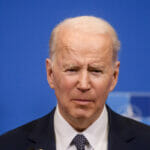Armenia Considers Ban On Gender-Specific Abortions by EurasiaNet
After years of experiencing a population decline, Armenia is proposing a ban on gender-selective abortions that favor boys. The measure, if adopted by parliament, would be the first such measure in the relatively conservative, male-centric South Caucasus.
Submitted to parliament on July 2, the bill, drafted by the Ministry of Health, explicitly bans all sex-selective abortions and, in a bid to close any loopholes, specifically prevents abortions without a doctor’s consent between the 12th and 22nd weeks of pregnancy. It is during that time of gestation that a child’s sex manifests itself.
Women who want an abortion during this period would have to apply in writing to a hospital and wait for three days. During that period, “psychologists and specialists will work with the woman” to help her understand the consequences of her choice, said Gayane Avagian, head of the Ministry of Health’s Maternity and Reproductive Health Division.
Doctors who violate the law would face potential fines of 70 to 100 times the minimum monthly salary of 55,000 drams ($115.10).
A first reading of the bill has not yet been scheduled, but is expected in September, when legislators reconvene.
The Ministry of Health contends the bill deserves speedy adoption. For a country with a population of just over 3.06 million – and one believed to be shrinking from emigration – abortions that favor male fetuses carry critical long-term effects.
The ministry’s Maternal and Child Health Department estimates that each year in Armenia some 2,000 abortions are performed specifically to terminate a female fetus. (Explanations for the calculation were not available.) That practice, less common during the Soviet era, has affected Armenia’s birth rate since 1991, experts believe. It currently stands at 13.92 births per 1,000 people, a rate lower than that of Gibraltar.
By contrast, the country’s 2012 birth ratio of 114 boys for every 100 girls stands as the third highest in the world, after neighboring Azerbaijan, at 116, and China, at 118, according to the United Nations Population Fund (UNFPA). The UNFPA sets the norm at 102-106 males for every 100 females.
“The situation is quite disturbing,” commented Garik Hayrapetian, who heads the UNFPA’s office in Yerevan. A 2012 survey of 2,830 households by UNFPA and government bodies found that preferences for a baby boy can outstrip that for a baby girl by a factor of six, he said.
Many observers doubt that the proposed ban on selective abortions will reverse the gender trend. They also fear that it will increase the risks of corruption, encourage at-home abortions and, consequently, increase the rate of maternal mortality.
“Having a son is one of the most important issues for many Armenian families, and I highly doubt that it will be possible to get results [and end selective abortions] by using prohibitions,” commented Aharon Adibekian, director of Sociometer, a sociological research center. “When you get down to it, our people are very quick-witted, and they will always find a way to reach their goals.”
First of all, the [popular] mentality should be changed,” Adibekian added.
Shifting public attitudes on gender-related issues could prove a daunting task. In the conservative, eastern region of Gegharkunik, for instance, male births outnumber female births by 118 to 100, the highest rate in Armenia, and one equivalent to that in China, which maintains a one-child policy.
Even some female residents of Gegharkunik see no reason to correct the existing imbalance. “When I was pregnant with my first child and I found out that it’s a boy, I was enormously happy. It meant that I had achieved my main goal. If there is no boy, there is no family,” said one 28-year-old woman in the village of Lichk, not far from Lake Sevan.
Ultimately, many women see a male child as a sort of insurance policy. “Do you know how many families break up [in divorce] because there was no son, how many women were sent back to their father’s houses since they couldn’t have a son, how many abortions took place out of the hope to have a son [later], how many women were beaten up for having a girl?” asked the Lichk villager. “Many.”
The pressure to abort female fetuses is widespread in Armenia. Twenty-five-year-old Yerevan resident Lilit Matevosian claimed that her mother-in-law and husband ordered her to abort her daughter at 14 weeks. “Because my first child was a girl, if a second one came, I was supposed to either have an abortion or ruin my family,” she said.
The abortion, this January, left her conscience-stricken. She believes, though, that she had “no other option.”
Matevosian predicted that to get around the ban on selective abortions, Armenian families will simply opt for bribery or travel north to neighboring Georgia, where abortions that favor boys also occur regularly.
Gayane Avagian, head of the Armenian Ministry of Health’s Maternity and Reproductive Health Division, concedes that challenges exist in Armenia for its proposed ban on sex-selective abortions. Aside from seeing the ban passed, she said, greater work needs to be done to emphasize women’s role in society, increase education about gender equality and reproductive health, and raise the level of awareness about the effects of selective abortions on Armenia’s overall population.
A two-year program involving the Labor Ministry and Armenian and international NGOs already is underway to raise awareness about the detrimental effects of sex-selective abortions, she said. “I am sure … people will realize that to have a baby boy is good, but not at the expense of baby girls,” Avagian said.
Editor’s note:
Marianna Grigoryan is a freelance reporter based in Yerevan and editor of MediaLab.am.











